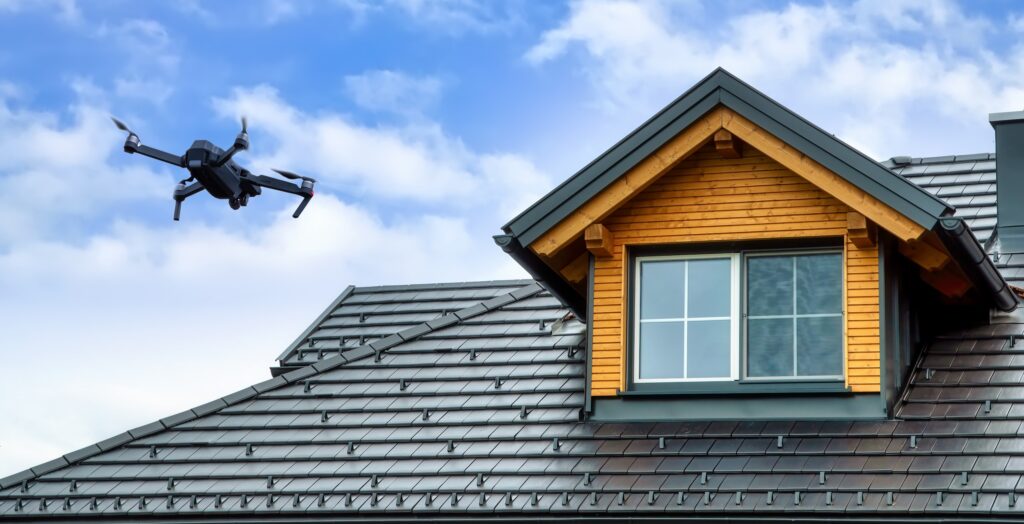Choosing the Right Roof Ventilation
More important than the shape of your roof is its ability to ventilate your home properly. Whether you have a steeply pitched roof or a flat roof, the right roof ventilation is crucial for a healthy home. There are passive and active ventilation methods, and it is key to ensure that the vents you choose meet your specific needs.
Why proper ventilation is important
Ventilation guarantees the movement of fresh air. It prevents the buildup of moisture and helps control the indoor temperature. The goal is to let hot air out and let cool air in.
There are two types of roof ventilation: Passive and Active. The choice between passive and active ventilation depends on your home’s size, budget, and your visual design preferences.

Contact us for a siding quote today!
Without proper venting, your roof is at risk
Passive roof ventilation uses the wind to move air through and out of the attic without using electricity. Ventilation systems of this type use the natural movement of air to create ventilation. Passive roof vents are usually less expensive than active ones and do not need electricity or solar energy to work. They prevent drafts, control attic temperature, and lower energy costs. Lastly, they have fewer moving parts, so they require little maintenance.
Active roof ventilation uses fans or turbines to create air movement regardless of wind or weather conditions. Complex structures can benefit from active ventilation systems that can also be combined with passive systems for the best results. They are more noticeable than passive systems, but they provide more ventilation.
Active ventilation systems create a vacuum in the attic, pulling in fresh air, keeping it at the right temperature and eliminating drafts. Active vents help control moisture, mold and mildew.
Our New England winters can be harsh and ice dams are a common result of poor roof ventilation. In the summer, inadequate ventilation can result in poor indoor air quality because of stale air in the attic. You also risk overburdening your air conditioning system by having to work harder to cool the upper floors of your home. There can also be extra moisture in the attic and dry rot of roof sheathing.
Choosing the right roof ventilation for your New England home
It is helpful to consider the following when deciding on your home’s ventilation system:
Active or passive? Active ventilation systems use fans, while passive systems use natural convection. Consider energy efficiency, maintenance, and the higher cost of active ventilation systems.
Location is an important factor. High humidity? Wind or lack of wind is another essential aspect.
The size of your attic is important. For every 150 sq.ft of attic space, you will require roughly 1 sq.ft of ventilation.
Select a vent type
There are many types of vents for passive and active ventilation systems. Whatever you select, you want to be sure that you have the same number of intake and exhaust vents for a balanced ventilation system. You also need to ensure that you choose vents that work well together.
Soffit or eave vents
A common choice for pulling fresh air into the attic, soffit vents are placed under the eaves, built into the soffit or separately installed. These vents provide continual ventilation and maintain a pleasant temperature.
Gable vents
Mostly used with a gable style roof, gable vents can be placed on each side of the home. This passive intake vent is placed on the gable ends of the home near the peak. They allow air to move in and out of the attic, providing cross-ventilation. Gable vents are not as effective on more complex roof styles because the cross breeze can be impeded by rafter beams, dormers, and other parts of the roof.
Ridge vents
Running along the ridge of the roof, exhaust ridge vents are almost invisible. They work with soffit vents (intake vents) to create a constant breeze that helps control the interior temperature. They work well in homes with long ridge lines. Ridge vents are exhaust vents and may not be the best choice in locations with a lot of rain or strong wind.
Wind and turbine vents
These vents move air with rotating blades. They are roof mounted and provide an inexpensive, non-electric form of attic ventilation. Even in the absence of strong winds they create the exit of warm air from the attic. In addition, they are low maintenance and easy to install.
Solar powered vents
Eco-friendly and cost-effective, solar powered vents are easy to install and can be positioned almost anywhere on the roof. In locations with little sun, they may not be the best choice. Some homeowners object to their visual effect, so that is a consideration as well.
Louver vents
Also called box vents, louvers are exhaust vents with a square shape that can be located near the top or sides of the roof. They are not as efficient as ridge vents, but they are a good choice for roofs with intricate interior wiring.
Fascia vents
These vents are made to allow airflow into the space between the roofing materials and the fascia of the roof. This helps avoid condensation, mold and ice dams. Increased airflow in this space prevents insects, leaves and other debris from entering the roofing system.
Cupola vents
A less frequent choice for ventilation, cupola vents were originally created to allow lots of air into a barn loft to help dry hay or other crops stored in the there. Cupola vents acted as both intake and exhaust. Today, the main reason to use a cupola vent is to allow extra light into an area below the vent. Cupola vents come in many styles and shapes, some with wooden louvers and others are wide open to allow for maximum light to areas below. Many Italian style homes have cupola vents for ventilation and to coordinate with the home’s aesthetic design. Cupola vents add charm but also a premium cost.
Each type of vent has the task of either removing old, stale air from the attic space (exhaust) or pulling in fresh air into the attic and home (intake). These brief descriptions do not include all the variations available with each style vent. There are many and the final choice will depend on several factors, including the shape and style of your roof. Learn more about ventilation here.
When considering your new roof and ventilation system, it is essential to consult with a professional, experienced roofing specialist.
Get a FREE estimate on a new roof and ventilation system in the northeast today.
No matter where you live in Massachusetts, we can install a state-of-the-art roofing and ventilation system that can handle even our New England weather. Please schedule your free appointment online or call us at (508) 873-1884 today to learn about proper ventilation for your new roof and the options available.






